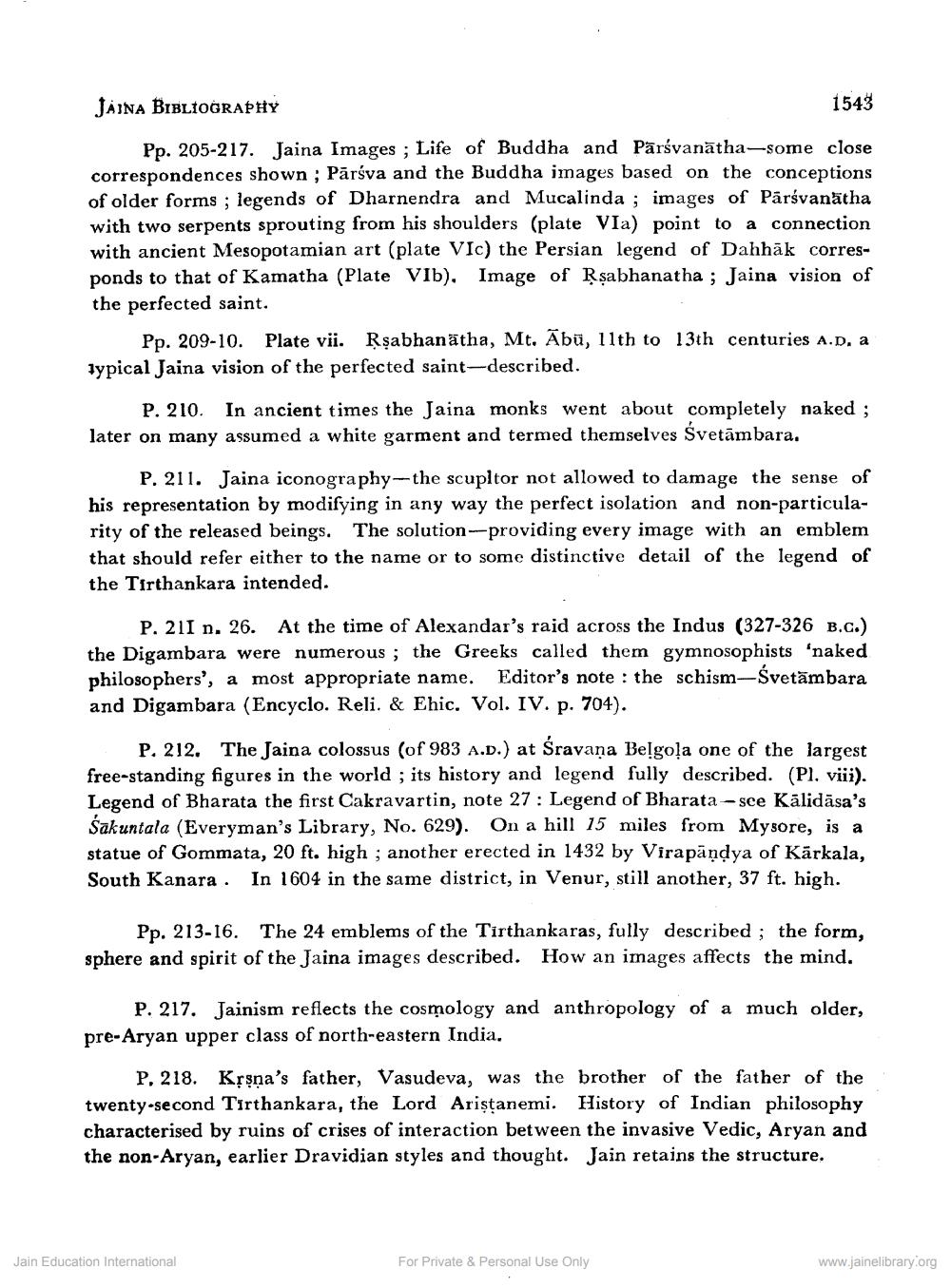________________
JAINA BIBLIOGRAPHY
1543 Pp. 205-217. Jaina Images ; Life of Buddha and Pārsvanātha—some close correspondences shown ; Pārsva and the Buddha images based on the conceptions of older forms ; legends of Dharnendra and Mucalinda ; images of Pārsvanatha with two serpents sprouting from his shoulders (plate Vla) point to a connection with ancient Mesopotamian art (plate VIC) the Persian legend of Dahhāk corresponds to that of Kamatha (Plate Vlb). Image of Rşabhanatha ; Jaina vision of the perfected saint.
Pp. 209-10. Plate vii. Rşabhanätha, Mt. Abü, 11th to 13th centuries A.D. a Typical Jaina vision of the perfected saint-described.
P. 210. In ancient times the Jaina monks went about completely naked ; later on many assumed a white garment and termed themselves Svetāmbara.
P. 211. Jaina iconography--the scupitor not allowed to damage the sense of his representation by modifying in any way the perfect isolation and non-particularity of the released beings. The solution--providing every image with an emblem that should refer either to the name or to some distinctive detail of the legend of the Tirthankara intended.
P. 211 n. 26. At the time of Alexandar's raid across the Indus (327-326 B.C.) the Digambara were numerous ; the Greeks called them gymnosophists 'naked philosophers', a most appropriate name. Editor's note: the schism-Svetämbara and Digambara (Encyclo. Reli. & Ehic. Vol. IV. p. 704).
P. 212. The Jaina colossus (of 983 A.D.) at Sravana Belgola one of the largest free-standing figures in the world ; its history and legend fully described. (Pl. viii). Legend of Bharata the first Cakravartin, note 27 : Legend of Bharata - see Kālidāsa's Sakuntala (Everyman's Library, No. 629). On a hill 15 miles from Mysore, is a statue of Gommata, 20 ft. high ; another erected in 1432 by Virapāņdya of Kārkala, South Kanara. In 1604 in the same district, in Venur, still another, 37 ft. high.
Pp. 213-16. The 24 emblems of the Tirthankaras, fully described; the form, sphere and spirit of the Jaina images described. How an images affects the mind.
P. 217. Jainism reflects the cosmology and anthropology of a much older, pre-Aryan upper class of north-eastern India.
P, 218. Krsna's father, Vasudeva, was the brother of the father of the twenty-second Tirthankara, the Lord Aristanemi. History of Indian philosophy characterised by ruins of crises of interaction between the invasive Vedic, Aryan and the non-Aryan, earlier Dravidian styles and thought. Jain retains the structure.
Jain Education International
For Private & Personal Use Only
www.jainelibrary.org




